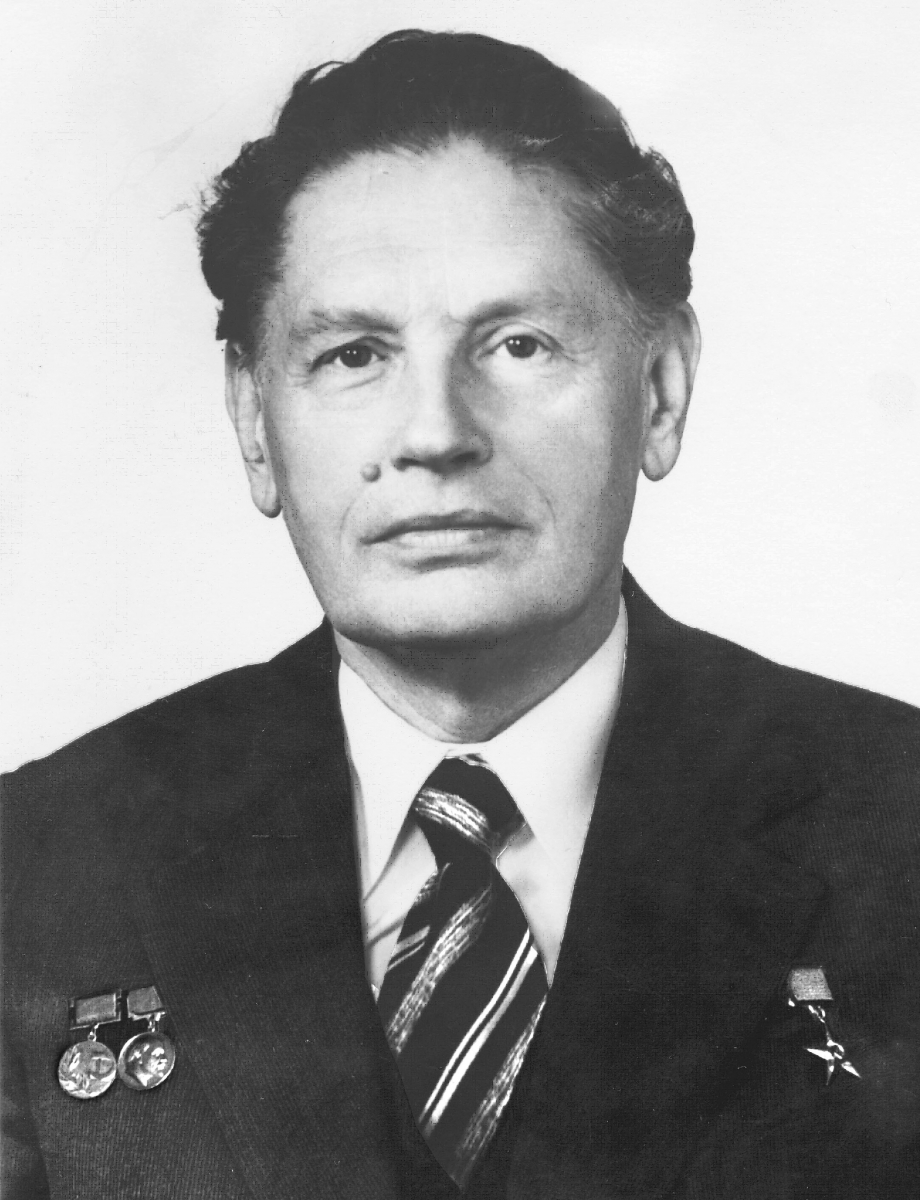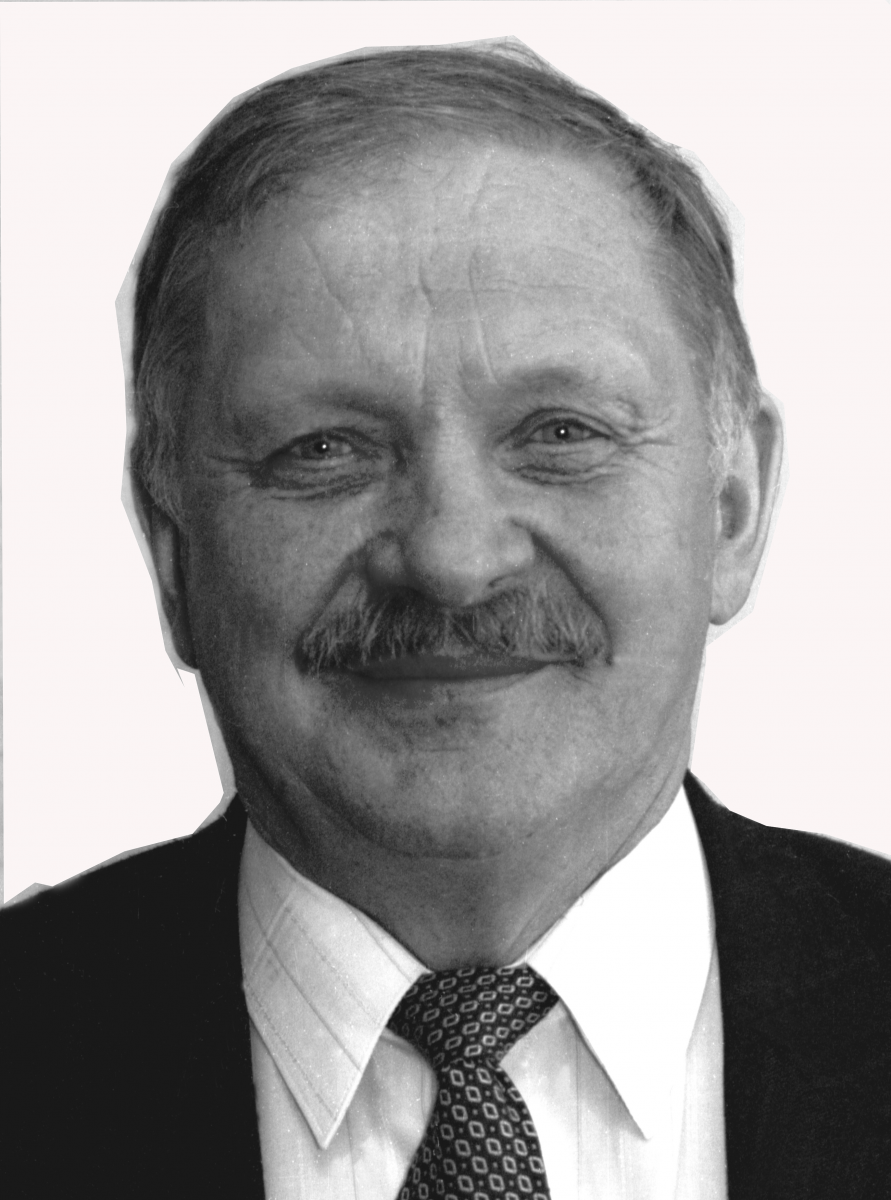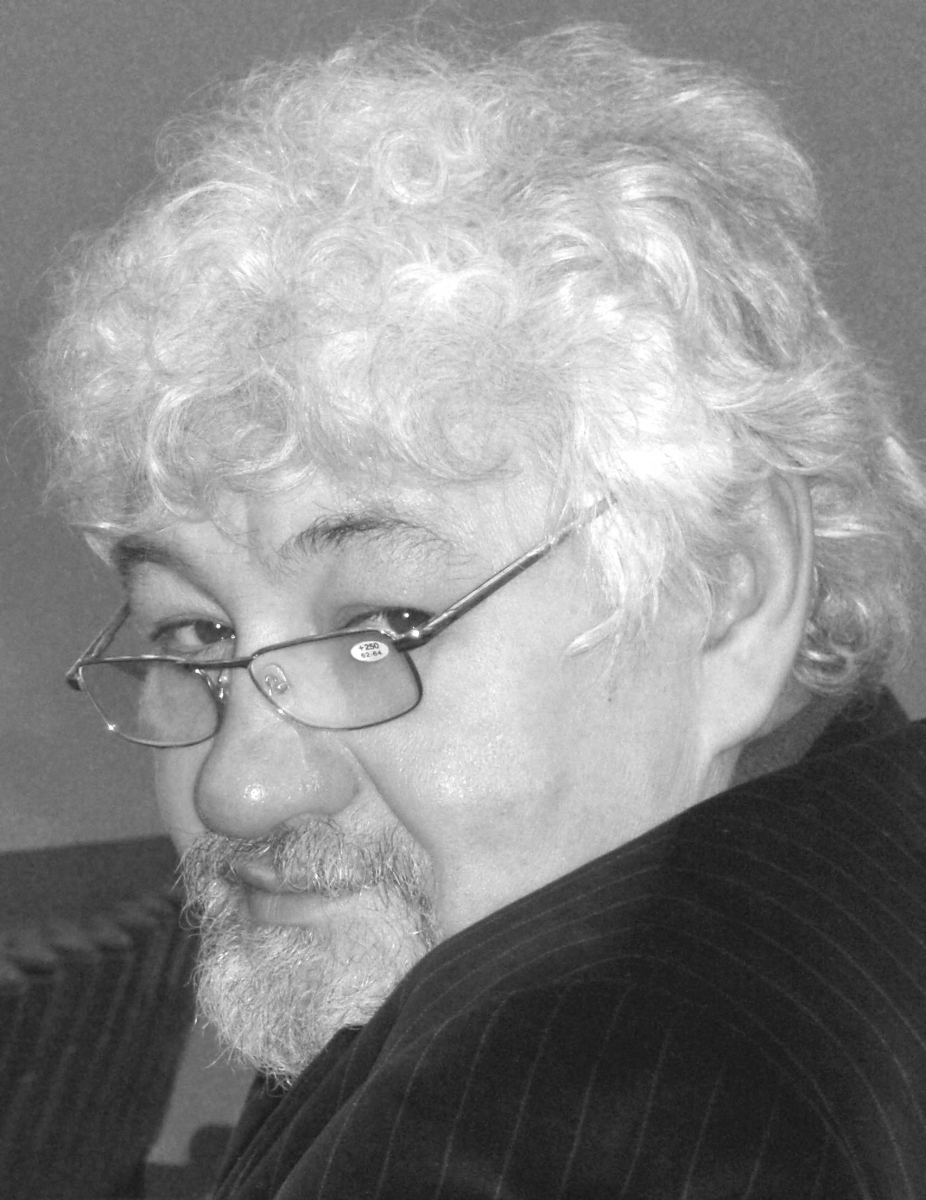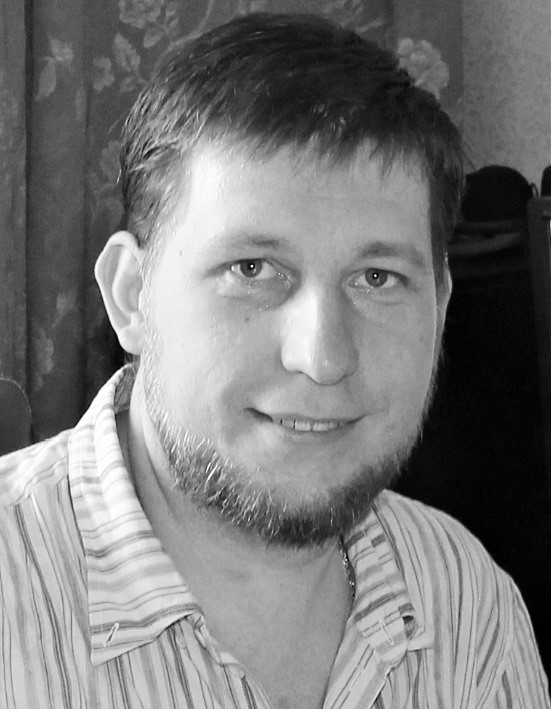DYNAMIC CONTROL SYSTEMS
Named after B.N. Petrov
The Laboratory was established as part of the Institute of Automation and Remote Control, the USSR Academy of Sciences, on February 7, 1952. Head of the Automatic Control and Regulation Department of the Institute, Dr. Sci. (Eng.), Prof. Boris N. Petrov was appointed the first Head of the Laboratory. (Later on, he became an Academician and Vice-President of the USSR Academy of Sciences.)
 |
|
Boris N. Petrov, Founder and first Head of Laboratory No. 1 |
In Laboratory No. 1, Acad. B.N. Petrov and his followers formulated the fundamental principles of control theory, developed new sections of the theory, and proposed original research methods. They include the following: the method of structural transformations of automatic system diagrams and adequate mathematical apparatus (the algebra of structural diagrams), methods for integrating nonlinear differential equations, the invariant theory (in particular, necessary conditions for the physical implementability of absolute invariance conditions, widely known nowadays as Petrov’s two-channel principle), the theory of nonlinear invariant time-delay systems and combined systems, and a new class of systems (double invariance systems). In addition, invariance conditions were generalized to the case of statistically defined disturbances, and two-channel principle ideas were developed for information and measuring devices.
B.N. Petrov repeatedly participated in meetings of the famous Council of Chief Designers headed by S.P. Korolev. In 1954, the Soviet Government entrusted the Institute to lead the research on control of the propulsion system of the R-7 intercontinental two-stage missile, developed by S.P. Korolev. B.N. Petrov was appointed the scientific supervisor of those works. Starting from 1956, an important area of B.N. Petrov’s work was control systems for artificial satellites. He significantly contributed to creating multi-seat manned spacecraft, automatic stations launched to the Moon, and soft landing systems for automatic spacecraft on the Moon. As Chairman of the Intercosmos Council, B.N. Petrov was personally involved in solving numerous scientific, organizational, and technical problems of the Soyuz–Apollo Test Project (USSR and USA).
Led by B.N. Petrov, the Laboratory had been generating and developing new ideas and the best scientists of the Institute. Over the years, the Laboratory merged many scientific divisions: Laboratories No. 6 (the first Head, Dr. Sci. (Eng.), Prof. G.M. Ulanov), No. 8 (Dr. Sci. (Eng.), Prof. Yu.P. Portnov-Sokolov), No. 22 (Acad. S.V. Emelyanov), No. 42 (Dr. Sci. (Eng.), Prof. V.Yu. Rutkovsky), and No. 48 (Dr. Sci. (Eng.), Professor V.A. Viktorov).
In the 1970s, the Laboratory led by B.N. Petrov conducted research in several main areas:
– Study and structural design of specialized onboard digital computing means for aircraft (Drs. Sci. (Eng.) V.F. Mayorov and Yu.V. Kovachich and Cands. Sci. (Eng.), V.V. Bel’gii and A.M. Shevchenko); analysis of architectures and methods for increasing the fault-tolerance of onboard computer complexes (Cand. Sci. (Eng.) E.M. Mamedli and Dr. Sci. (Eng.) A.P. Kurdyukov). The results were implemented in the onboard control system of Buran, the first domestic space shuttle.
– Study of harmonic linearization methods with application to systems with logical control laws. Logical control ensures high speed, accuracy, required process quality, high reliability of system operation, and, whenever necessary, low-cost control using simple and reliable technical means. Development of an approximate method for studying automatic systems controlled by finite state machine methods. Study of auto-oscillatory modes in logical pulse and pulse-relay control systems (Dr. Sci. (Eng.) M.V. Starikova).
– Development of design principles, structures, and implementation methods for onboard information and control systems of high-resource autonomous spacecraft to explore comets, minor planets, and satellites of large planets in the solar system. As part of this problem, independent research was focused on the control and technical diagnosis of onboard nuclear power units and systems for providing targeted scientific programs. The Laboratory’s R & D results in this area (Dr. Sci. (Eng.), Prof. V.V. Bugrovsky and Cands. Sci. (Eng.) D.A. Gol’din and I.A. Vogau) were implemented in the technical project of a nuclear power source spacecraft with small thrusters for asteroid belt exploration (Lavochkin Scientific and Production Association).
 |
|
Boris V. Pavlov |
– Development of an environmental monitoring system based on space and aerial survey, mathematical modeling of the dynamics of natural biotic and abiotic processes and biogeocenosis, and ground field experiments (V.V. Bugrovsky, D.A. Gol’din, and I.A. Vogau). A methodology was proposed for forming a network of regional geo-eco-information centers with the three information sources mentioned.
In 1983, Laboratory No. 1 was headed by Boris V. Pavlov, Dr. Sci. (Eng.), Prof., and a USSR State Prize laureate. He led and actively participated in the research initiated by B.N. Petrov and continued by Laboratory’s employees.
New theoretical and applied research was developed in the Laboratory:
– New control methods for moving objects in a promising branch called stochastic H∞ robust control (A.P. Kurdyukov). The corresponding results increase the robustness degree to disturbances when designing motion control algorithms for aircraft. This improves the safety and survivability of aircraft.
– State estimation for a technical plant as a nonlinear system using observability analysis and observer design (Dr. Sci. (Phys.–Math.) K.E. Starkov). The geometrical structures of the set of universal inputs we studied for the polynomial “system–observation law” pair.
– Research to create highly intelligent information and control systems for complex technical objects and man-machine complexes (Cand. Sci. (Eng.) A.M. Chesnokov and Cand. Sci. (Phys.–Math.) V.A. Boichenko). Intelligent methods were studied for human operators (crew members as well as onboard and ground control systems operators) in a rapidly changing environment with tough decision time constraints, insufficient a priori information, and unreliable current information. In this area, effective training methods and knowledge base representations, inference mechanisms, and other artificial intelligence methods were developed and implemented in applied software and tools.
In recent years, the Laboratory’s theoretical research results have been actively implemented in aviation and space technology. The energy approach to motion control was developed for a highly efficient aircraft motion control system (A.M. Chesnokov and A.M. Shevchenko). The new approach was mathematically formulated via the extended energy balance equation and a generalized criterion of the spacecraft’s total specific energy. Control modes unreachable in the class of traditional systems were implemented on the set of objects under unpredictable disturbances.
 |
|
Alexander P. Kurdyukov |
In 2007, the Laboratory was headed by Petrov’s last graduate student, Prof. A.P. Kurdyukov. During this period, the Laboratory conducted research in several areas:
– A theory was elaborated to design controllers for linear multidimensional time-invariant systems with a random Gaussian input signal with unknown characteristics. The problems of constructing suboptimal anisotropy-based controllers and suboptimal anisotropy-based filters were solved. Numerical methods for constructing suboptimal controllers based on semidefinite programming and linear matrix inequalities were developed. Anisotropy-based controllers of a given order were designed (A.P. Kurdyukov, Dr. Sci. (Eng.) M.M. Tchaikovsky, and E.A. Maksimov). An anisotropy-based robust control theory for descriptor systems was elaborated (Cand. Sci. (Phys.–Math.) A.A. Belov). Fundamentals of the anisotropy-based robust control theory (analysis and design) were laid down in the case of a nonzero mean value of the input signal (A.P. Kurdyukov and Cand. Sci. (Phys.–Math.) A.Yu. Kustov), significantly expanding the class of possible engineering applications of the theory. Anisotropy-based filtering methods were developed (Cand. Sci. (Eng.) V.N. Timin and Dr. Sci. (Eng.) M.M. Tchaikovsky). All theoretical results are used for designing aircraft motion control systems (Cand. Sci. (Eng.) V.N. Timin and Dr. Sci. (Eng.) M.M. Tchaikovsky).
– The dynamics of nonlinear automatic control systems were studied. For some classes of nonlinear systems, the localization problems of invariant sets (particularly periodic orbits) were investigated. The solution of such problems is essential for developing the theory of chaos control (K.E. Starkov).
– Based on the energy approach, the objective control method of the aircraft’s mass was developed by identifying one of the moving object’s parameters. The main theoretical results were implemented in processing the data of MSRP-64 onboard recorders (A.M. Shevchenko and G.N. Nachinkina).
– The onboard measurements of various physical fields (magnetic, gravitational, thermal infrared, and others) were studied. The purpose of such research is to solve different problems arising in navigation, control, cartography, and geophysics. The studies deal with many aspects related to onboard measurements: developing algorithmic and hardware support for onboard measuring systems, determining navigation parameters based on different-nature information, implementing control of a moving object during measurements, and solving direct and inverse geophysical problems (B.V. Pavlov, Cand. Sci. (Eng.) A.K. Volkovitskiy, and Dr. Sci. (Eng.) E.V. Karshakov).
 |
|
Evgeny V. Karshakov, Head of Laboratory No. 1 |
Since 2018, the Laboratory has been headed by Cand. Sci. (Phys.–Math.) E.V. Karshakov. He is the leader and active participant of R & D works carried out under A.P. Kurdyukov, continued at present. E.V. Karshakov is a prominent expert in the area of onboard measurements of physical fields with application to navigation and geophysics. He defended his doctoral dissertation under the scientific supervision of B.V. Pavlov. E.V. Karshakov has been working at the Institute since 2005.
The Laboratory conducts research in several areas:
– The stochastic robust control theory, pioneered by A.P. Kurdyukov, is further developed. Presently, a group of Laboratory’s employees carries out this research (A.A. Belov, Cand. Sci. (Phys.–Math.) O.G. Andrianova, V.A. Boichenko, A.Yu. Kustov, V.N. Timin, M.M. Tchaikovsky, Cand. Sci. (Phys.–Math.) A.V. Yurchenkov, and Cand. Sci. (Phys.–Math.) I.R. Belov). By the middle of the 2010s, the anisotropy-based theory was extended to the class of systems with parametric disturbances. The procedure for designing optimal anisotropy-based controllers required solving a system with three coupled Riccati equations, a Lyapunov equation, and a special algebraic equation. A computational algorithm based on the homotopy method was developed to solve such systems of equations. To date, anisotropy-based control and filtering problems in the suboptimal and ϒ-optimal statements have been solved by convex optimization methods using linear matrix inequalities. This approach considerably simplified the computational algorithms for anisotropic controllers and estimators. Moreover, it yielded fundamentally new problem statements and solutions in the anisotropy-based theory: multichannel control and filtering problems; anisotropy-based control laws placing the poles of closed loop systems in a given area of the complex plane; design problems of anisotropy-based controllers of a given order and a given structure (including PID controllers); design problems of anisotropy-based control laws and estimators for systems with parametric uncertainty. The anisotropy-based theory is actively developed for algebraic-difference systems and systems with variable parameters, non-centered multidimensional random sequences, and systems with multiplicative random disturbances (the stochastic model of parametric uncertainty). Studies are carried out to create an analog of the anisotropy-based theory for continuous signals and systems (the σ-entropic theory).
– Research on the onboard measurements of physical fields for geophysics and navigation is continued by a group of employees (B.V. Pavlov, A.K. Volkovitskiy, E.V. Karshakov, D.A. Gol’din, E.V. Moilanen, Cand. Sci. (Eng.) M.Yu. Tkhorenko, A.M. Garakoev, Cand. Sci. (Phys.–Math.) I.A. Papusha, and Dr. Sci. (Phys.–Math.) A.A. Golovan). Data processing methods and algorithms were developed for mobile object’s onboard systems measuring the parameters of various physical fields. The main purpose of the methods and algorithms is to compensate the distorting effect of disturbances caused primarily by the carrier’s motion. In practice, this distorting effect many times exceeds the useful signal value. The object’s motion parameters are needed for navigation tasks. They must also consider the spatial and temporal variability of the measured field. The developed methods are based on the following idea: the carrier’s distorting effect can be calculated using appropriate navigation information and eliminated from the sensor readings. The form and magnitude of the distorting effect in measurements of various physical fields can be determined by solving the inverse problem (finding the physical parameters from measurements of field components). Such problems belong to the class of ill-posed ones and are solved using regularization methods. The Kalman approach turned out most effective: the model’s unknown components are described by a random process with generating equations containing white noise on the right-hand side. Imposing constraints on the spectral characteristic of a random component is a method to regularize the inverse problem. Within the elaborated theory, the Kalman approach was implemented for linear and nonlinear systems. The constructed theory of onboard measurements of spatial physical fields is used to measure the parameters of gravitational, magnetic, and electromagnetic fields. Moreover, it significantly increases the accuracy of various onboard systems. The resulting measurements are applied for navigation, detection, direction finding, geological-geophysical cartography, and mineral exploration.
– The conceptual and progressive theoretical lines of the Laboratory’s work include applying the energy approach to spatial motion control when solving new flight tasks (A.M. Shevchenko). These are implementing the aircraft’s takeoff and landing modes. The energy approach is mathematically formulated via the energy balance equation in the “object–propulsion–environment” system. At the present stage, the mechanical rolling resistance forces of the landing gear are considered among the environment factors. The extended equation relates the operating mode of engines, aerodynamic characteristics, wind disturbances, and braking forces, expressing them in the same generalized coordinates (specific energy).
– Means to improve the pilot’s situational awareness are developed to increase the reliability of air transportation and reduce the preconditions for emergencies in the ground modes. These means are based on the methodology for predicting the aircraft’s future trajectory on the runway and when climbing to the required altitude. The most significant terminal states in these modes are stopping during braking and overcoming an altitude obstacle on takeoff with a minimum stable flight velocity. The energy approach yields explicit-form algorithms for calculating predictive lengths to reach these terminal states. The applicability of prediction methods by operators depends on the reliability and plausibility of the prediction. Laboratory’s employees develop methods for calculating possible reductions of the prediction errors. Model tests show the sufficient reliability of the prediction algorithms. (A.M. Shevchenko and G.N. Nachinkina).
– Laboratory’s employees theoretically study and develop algorithms for the operation of information-measuring systems of test benches, create software and mathematical support of data storage system databases, and develop the technology, algorithms, and technical means to control and tune working process parameters for preventing emergencies during fire and flight tests of liquid rocket engines, low thrust engines, and propulsion systems. These problems are solved by developing concepts, design principles, methods, and algorithms for a new class of highly reliable interactive management systems for tests of moving objects. Under tough time limits, such systems promptly reconfigure the test management strategy based on current situation analysis involving a human operator based on hierarchically detailed information models of the current state of tested objects and the anticipatory criterial adaptation technology to guarantee controllability conditions and prevent abnormal modes. The R & D results were used to test new prototypes and models of space-rocket hardware. The research is conducted by a group of employees led by Cand. Sci. (Eng.) V.V. Guchuk.
The Laboratory participates in Russian and international grants and programs of the Russian Academy of Sciences, the Russian Foundation for Basic Research, the Ministry of Science and Higher Education of the Russian Federation, and other agencies, as well as in many economic contracts.
The Laboratory participates in R & D works within orders of the Ministry of Defense of Russia and Roscosmos.
Laboratory’s employees are members of the editorial boards of several scientific journals, scientific and academic councils of the Institute, other RAS institutes, and universities, as well as program and organizing committees of international conferences. Teaching activities at Bauman Moscow State Technical University contribute to the inflow of young researchers to the Laboratory. There is a youth scientific school in the Laboratory, led by E.V. Karshakov.
Laboratory’s employees regularly publish their papers in leading peer-reviewed journals and participate in all-Russian and international conferences. Over 1000 scientific papers and 30 monographs have been published so far. Among them, note the following books released recently:
- Vavilova, N.B., Golovan, A.A., and Parusnikov, N.A., Kratkii kurs teorii inertsial’noi navigatsii (The Theory of Inertial Navigation: A Short Course), Moscow: Trapeznikov Institute of Control Sciences RAS, 2022, p. 148. (In Russian.)
- Belov, A.A., Andrianova, O.G., and Kurdyukov, A.P., Control of Discrete-Time Descriptor Systems, Cham: Springer International Publishing, 2018, p. 169.
- Volkovitskiy, A.K., Karshakov, E.V., and Pavlov, B.V., Magnitogradientnye izmeritel’nye sistemy i kompleksy. Tom I. Printsipy izmerenii i struktura magnitogradientnykh kompleksov (Magnetogradiometry Systems and Complexes, vol. 1: Measurement Principles and Structure of Magnetogradiometry Complexes), Moscow: Trapeznikov Institute of Control Sciences RAS, 2018, p. 149. (In Russian.)
- Volkovitskiy, A.K., Karshakov, E.V., Pavlov, B.V., and Tkhorenko, M.Yu., Magnitogradientnye izmeritel’nye sistemy i kompleksy. Tom II. Obrabotka informatsii i primenenie magnitogradientnykh kompleksov (Magnetogradiometry Systems and Complexes, vol. 2: Information Processing and Application of Magnetogradiometry Complexes), Moscow: Trapeznikov Institute of Control Sciences RAS, 2018, p. 135. (In Russian.)
- Yurchenkov, A.V. and Kurdyukov, A.P., Elementy teorii robastnoi ustoichivosti (Elements of Robust Stability Theory), Moscow: Trapeznikov Institute of Control Sciences RAS, 2016, p. 152. (In Russian.)
